 2010 Toyota Auris (facelift 2010) Dimensions, Size & Specs
2010 Toyota Auris (facelift 2010) Dimensions, Size & SpecsMeasurements of the 2010 Toyota Auris, engineered for optimal performance and comfort
| Dimensions | |
|---|---|
| Length: | 4245 mm167.1 in13.9 ft |
| Width: | 1760 mm69.3 in5.8 ft |
| Height: | 1505-1515 mm59.3-59.6 in4.9-5.0 ft |
| Trunk Capacity: | 310-354 liter10.9-12.5 cu ft |
| Trunk Capacity (Max): | 750-1335 liter26.5-47.1 cu ft |
| Weight Specifications | |
| Curb Weight: | 1220-1430 kg2690-3153 lbs |
| Maximal permitted Weight: | 1720-1920 kg3792-4233 lbs |
| Roof Load: | 75 kg165 lbs |
| Tire Specifications | |
| Rims Sizes: | 15-inch rims:
|
| Tire Sizes: |
|
The Toyota Auris facelift of 2010 represents the updated version of the first-generation Auris, produced from 2010 to 2012. As a compact hatchback, this model focuses on practicality and modern styling tailored for urban and suburban driving. The 2010 facelift brought refreshed design cues, including subtle changes to the front grille, headlights, and rear lights, while maintaining the proven platform of its predecessor.
Dimensionally, the 2010 Toyota Auris measures 4245 mm (167 inches) in length, making it compact enough for easy maneuverability in tight city streets but spacious enough for comfortable seating and cargo space. Its width is 1760 mm (69.3 inches), providing a balanced footprint that optimizes interior cabin width without making it cumbersome externally. Height varies slightly between 1505 mm and 1515 mm (59.3 to 59.6 inches), depending on trim and equipment, delivering a low center of gravity that enhances driving stability and aerodynamics.
The curb weight ranges from 1220 kg to 1430 kg (2689 to 3151 pounds), depending on the configuration and optional features, reflecting its efficient build and use of lightweight materials. Maximum weight capacity lies between 1720 and 1920 kg (3792 to 4233 pounds), indicating its ability to safely carry passengers and cargo.
Luggage capacity for the Auris facelift is flexible, with 310 to 354 liters (10.9 to 12.5 cubic feet) available with rear seats upright, making it suitable for daily errands and small family travel. Folding the rear seats down dramatically increases the cargo space to a range between 750 and 1335 liters (26.5 to 47.2 cubic feet), catering well to larger luggage or bulky items.
The Auris supports roof loads up to 75 kg (165 pounds), allowing for additional storage options such as roof racks or bike carriers. Wheel options include rims sized at 15, 16, and 17 inches with compatible tire sizes such as 195/65 R15, 205/55 R16, and 225/45 R17, balancing comfort and sportiness depending on driver preference.
Overall, the 2010 Toyota Auris facelift hatchback is a versatile compact car offering solid dimensions, efficient weight characteristics, and configurable cargo space in a stylish yet practical package. It remains a competitive choice for drivers seeking a reliable and well-sized hatchback in the early 2010s market.
Discover the standout features that make the 2010 Toyota Auris a leader in its class
Have a question? Please check our knowledgebase first.
The 2010 Toyota Auris (facelift 2010) has a length of 4245 mm (167.1 inches), a width of 1760 mm (69.3 inches), and the height ranges from 1505 to 1515 mm (59.3 to 59.6 inches). These dimensions place the Auris firmly within the compact hatchback category, providing a good balance between interior space and external maneuverability. The slight variation in height depends on specific trims and optional equipment, but overall the vehicle retains a compact profile well-suited for urban and suburban driving.
The 2010 Toyota Auris facelift weighs between 1220 and 1430 kg (2689 to 3151 lbs) in curb weight, depending on the trim and options selected. The maximum allowable weight ranges from 1720 to 1920 kg (3792 to 4232 lbs). This weight range reflects the vehicle's versatility, accommodating passengers and cargo comfortably without overly compromising fuel efficiency or handling. The curb weight ensures a stable yet responsive driving experience, suitable for city traffic and highway trips, while the max weight rating includes full load conditions such as passengers and cargo.
With the rear seats in use, the 2010 Toyota Auris (facelift 2010) offers between 310 to 354 liters (10.9 to 12.5 cubic feet) of luggage space. Folding the rear seats down expands this significantly to between 750 and 1335 liters (26.5 to 47.1 cubic feet). This flexible capacity allows the Auris to accommodate everyday grocery trips or larger loads such as sports equipment and luggage for travel, making it a practical hatchback option for various lifestyle needs.
Yes, the 2010 Toyota Auris facelift with its length of 4245 mm (167.1 inches), width of 1760 mm (69.3 inches), and height around 1505 to 1515 mm (59.3 to 59.6 inches) generally fits comfortably into a standard residential garage. Most single-car garages offer widths of at least 2438 mm (96 inches) and lengths between 4877 mm (192 inches) and 6096 mm (240 inches), which provide enough space for the Auris to park safely, with room to open doors and move around. However, it’s always advisable to double-check personal garage dimensions for fit.
Compared to the previous generation Toyota Auris (pre-facelift model produced from 2006 to 2010), the 2010 facelift version maintains a width of 1760 mm (69.3 inches), consistent with its predecessor’s measurements. This width strikes a good balance between cabin spaciousness and ease of urban driving or parking. The maintained width ensures that the facelift did not compromise interior comfort while enabling the car to remain maneuverable in tighter city spaces where wider vehicles might present challenges.
The 2010 Toyota Auris facelift is competitively sized in the compact hatchback segment, with a length of 4245 mm (167.1 inches) and a width of 1760 mm (69.3 inches). Comparable rivals, like the Volkswagen Golf Mk6 and Ford Focus from the same period, have similar footprints—Golf Mk6 is about 4255 mm long and 1799 mm wide, while the Ford Focus measures around 4384 mm in length and about 1823 mm in width. This positions the Auris slightly shorter and narrower than some competitors, offering excellent maneuverability and a practical footprint for daily urban use.
The 2010 Toyota Auris facelift offers several rim sizes: 15, 6J; 15, 6.5J; 16, 7J; and 17 inches. Corresponding tire sizes include 195/65 R15, 205/55 R16, and 225/45 R17. Smaller rims and tires favor drivability and comfort with better cushioning over bumps, while larger wheels with lower-profile tires offer improved handling and sportier aesthetics. The variety allows buyers to select between more economical and comfort-focused setups or sportier configurations tailored to enhanced grip and performance.
The roof load capacity of the 2010 Toyota Auris facelift is rated at 75 kg (165 lbs). This means the roof can safely support accessories like roof boxes, bike racks, or luggage carriers with a combined weight of up to 75 kg. It's important not to exceed this limit to avoid affecting vehicle dynamics, roof integrity, and safety. This moderate roof load makes the Auris versatile for outdoor activities and travel while maintaining vehicle stability.
The 2010 Toyota Auris facelift did not substantially change the fundamental dimensions compared to the earlier generation but introduced design tweaks that improved the car's visual appeal and possibly aerodynamic efficiency. Exterior updates included sharper front and rear styling, updated headlights, and refined interiors that enhanced the perception of spaciousness. These changes aimed to keep the Auris relevant in a competitive segment without altering its practical size, maintaining its strong balance between comfort, urban usability, and fuel efficiency.
The 2010 Toyota Auris facelift is designed as a five-seater hatchback, comfortably accommodating five passengers—two in the front and three across the rear bench. The compact yet intelligently laid-out interior offers adequate headroom and legroom for adults, especially with the flexible rear seats that fold down to increase cargo space. This seating capacity along with versatile cargo configurations makes the Auris suitable for small families or individuals needing a practical daily vehicle with good passenger and luggage flexibility.
Discover similar sized cars.

| Production: | 2003-2006 |
|---|---|
| Model Year: | 2003 |
| Length: | 4184-4197 mm164.7-165.2 in |
| Width: | 1706 mm67.2 in |
| Height: | 1448 mm57.0 in |
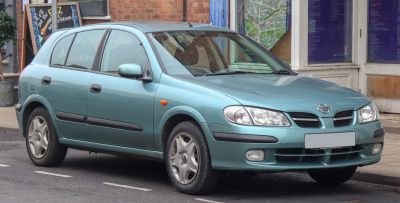
| Production: | 2000-2003 |
|---|---|
| Model Year: | 2000 |
| Length: | 4184 mm164.7 in |
| Width: | 1706 mm67.2 in |
| Height: | 1448 mm57.0 in |
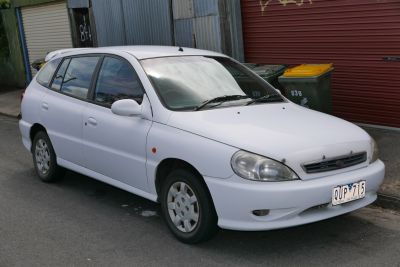
| Production: | 1999-2002 |
|---|---|
| Model Year: | 1999 |
| Length: | 4215 mm165.9 in |
| Width: | 1675 mm65.9 in |
| Height: | 1440 mm56.7 in |
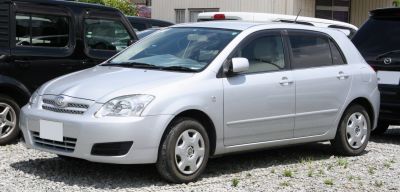
| Production: | 2001-2006 |
|---|---|
| Model Year: | 2001 |
| Length: | 4175 mm164.4 in |
| Width: | 1695 mm66.7 in |
| Height: | 1470 mm57.9 in |
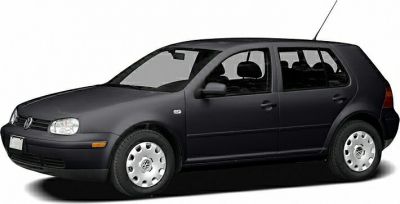
| Production: | 2003-2008 |
|---|---|
| Model Year: | 2004 |
| Length: | 4204-4246 mm165.5-167.2 in |
| Width: | 2010 mm79.1 in |
| Height: | 1465-1498 mm57.7-59.0 in |
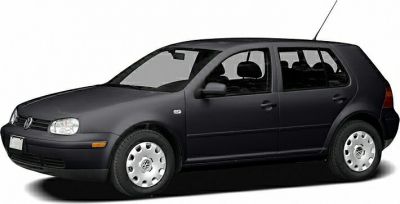
| Production: | 2003-2008 |
|---|---|
| Model Year: | 2004 |
| Length: | 4204-4246 mm165.5-167.2 in |
| Width: | 2010 mm79.1 in |
| Height: | 1465-1501 mm57.7-59.1 in |

| Production: | 2013-2018 |
|---|---|
| Model Year: | 2013 |
| Length: | 4210 mm165.7 in |
| Width: | 1680 mm66.1 in |
| Height: | 1435 mm56.5 in |

| Production: | 2011-2015 |
|---|---|
| Model Year: | 2011 |
| Length: | 4275 mm168.3 in |
| Width: | 2052 mm80.8 in |
| Height: | 1533 mm60.4 in |
